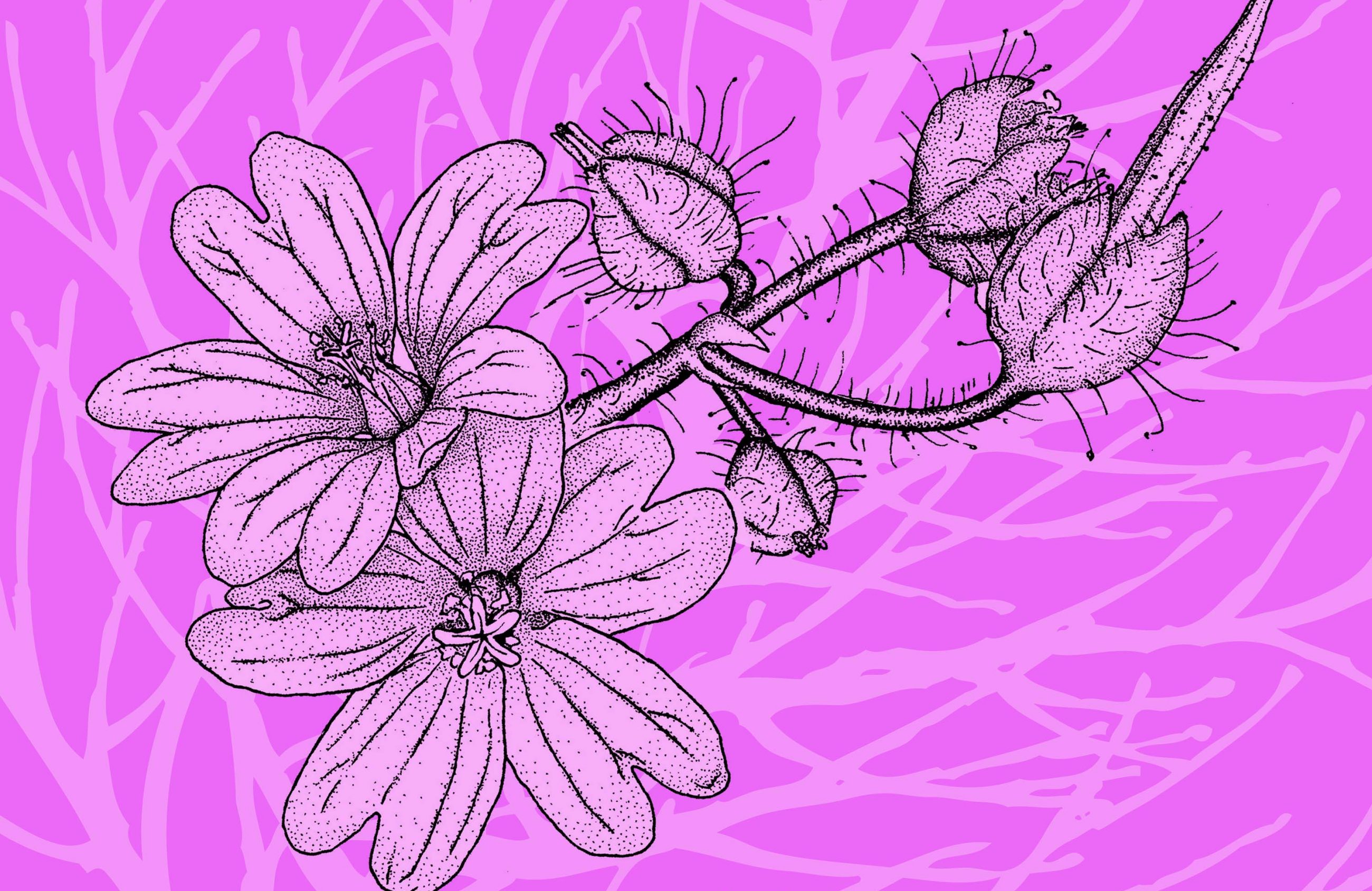Almost thirty years ago a new, annual species of geranium showed up at the Mount Pisgah Arboretum wildflower show. It is known as shining geranium or Geranium lucidum. It spread rapidly through the woodlands of Mount Pisgah. Within 10 years it became the dominant understory herb. It is now almost everywhere in western Oregon.
Considerable effort is devoted to combatting species that disrupt native ecosystems. English ivy was originally widely planted, but now it is illegal to plant because it has proven to be fiercely invasive. With the shining geranium, however, there was never a chance to keep it at bay. It spread so rapidly that we now have to accept it as being here to stay.
Many weedy species came with the arrival of Europeans in North America. To the original natives of the continent, Europeans brought with them an invasive culture and invasive plant species. We prefer to call the human invaders settlers, pioneers or migrants, so why not the plants? Their arrival was not by choice but they migrated thanks to opportunities given by some agent like wind or animals. Successful spread is what makes them “invasive.”
We cannot always determine if a new arrival is a natural, opportunistic migrant or a human-mediated invasive. But when something like shining geranium arrives, it doesn’t matter whether you call it a recent migrant or an invasive. Its presence must be simply accepted. It seems to me that those who are now called “illegal immigrants” deserve similar acceptance.
David Wagner is a botanist who works in Eugene. He teaches moss classes, leads nature walks and makes nature calendars. He can be contacted through his website, fernzenmosses.com.
